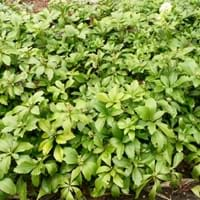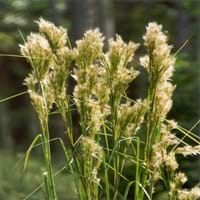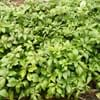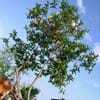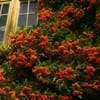Life Span
Perennial
Perennial
Type
Broadleaf Evergreen
Grass
Origin
China, Japan
Caribbean, Central America
Types
Not available
Broomsedge Bluestem, Broomsedge
Number of Varieties
Not Available
Habitat
Banks, Slopes, Temperate Regions
ditches, Grassland, Moist Ditches, Moist Soils, Roadsides
USDA Hardiness Zone
4-8
5-9
AHS Heat Zone
Not Available
10 - 5
Sunset Zone
21,22
H1, 3a, 3b, 4, 5, 6, 7, 8, 9, 14, 15, 16, 17, 18, 19, 20, 21, 22, 23, 24
Habit
Prostrate/Trailing
Upright/Erect
Minimum Height
Not Available
Flower Color
White
Cream, Green, White
Flower Color Modifier
Bicolor
Bicolor
Fruit Color
Not Available
Not Available
Leaf Color in Spring
Dark Green
Green, Blue Green
Leaf Color in Summer
Dark Green
Light Green
Leaf Color in Fall
Dark Green
Gray Green, Yellow green, Bronze
Leaf Color in Winter
Dark Green
Gold, Tan, Bronze
Leaf Shape
Lanceolate
Grass like
Plant Season
Spring, Summer, Fall, Winter
Fall, Winter
Sunlight
Partial shade, Full Shade
Full Sun, Partial Sun
Growth Rate
Medium
Medium
Type of Soil
Loam
Clay, Loam, Sand
The pH of Soil
Acidic, Neutral
Acidic, Neutral, Alkaline
Soil Drainage
Well drained
Average
Bloom Time
Late Spring, Early Summer
Late Summer, Early Fall, Fall, Late Fall, Early Winter
Tolerances
Drought, Variety of soil types
Not Available
Where to Plant?
Ground
Ground
How to Plant?
Divison, Seedlings, Softwood cuttings, Stem Cutting
Root Division, Seedlings
Plant Maintenance
Low
Medium
Watering Requirements
Requires watering in the growing season
Keep ground moist, Water Deeply
In Summer
Lots of watering
Lots of watering
In Spring
Moderate
Moderate
In Winter
Average Water
Average Water
Soil pH
Acidic, Neutral
Acidic, Neutral, Alkaline
Soil Type
Loam
Clay, Loam, Sand
Soil Drainage Capacity
Well drained
Average
Sun Exposure
Partial shade, Full Shade
Full Sun, Partial Sun
Pruning
Remove damaged leaves, Remove dead branches, Remove dead leaves
Cut or pinch the stems, Remove damaged leaves, Remove dead branches, Remove dead leaves
Fertilizers
All-Purpose Liquid Fertilizer
All-Purpose Liquid Fertilizer
Pests and Diseases
Alternaria leaf blight, Canker, Root knot nematode
Red blotch
Plant Tolerance
Drought, Variety of soil types
Drought
Flowers
Insignificant
Showy
Flower Petal Number
Single
Single
Foliage Texture
Medium
Coarse
Foliage Sheen
Glossy
Matte
Attracts
Bees
Birds, Butterflies
Allergy
Not Available
Not Available
Aesthetic Uses
Cottage Garden, Ground Cover, Landscape Designing, Showy Purposes
Ground Cover
Beauty Benefits
Not Available
Not Available
Environmental Uses
Air purification
Air purification, Food for animals, Food for birds, Provides ground cover, Wildlife
Medicinal Uses
Not Available
Not Available
Part of Plant Used
Fruits
Seeds
Other Uses
Container, Culinary use, Florist trade and landscaping, Grown for shade
Used as Ornamental plant
Used As Indoor Plant
No
No
Used As Outdoor Plant
Yes
Yes
Garden Design
Groundcover
Container, Dried Flower/Everlasting, Feature Plant, Mixed Border, Rock Garden / Wall
Botanical Name
Pachysandra terminalis
ANDROPOGON glomeratus
Common Name
Pachysandra, Japanese pachysandra, carpet box, Japanese spurge
Bushy Beardgrass, Bushy Bluestem, Bushy Broom Grass
In Hindi
जापानी रसदार पौधा
Bushy Bluestem plant
In German
japanische Spurge
Bushy Bluestem Pflanze
In French
Euphorbe japonaise
plante buissonnante Bluestem
In Spanish
Euphorbia japonesa
planta arbustiva andropogon
In Greek
Ιαπωνικά Ευφόρβιο
φυτό θαμνώδη BLUESTEM
In Portuguese
Spurge japonês
planta arbustiva Bluestem
In Polish
japoński Wilczomlecz
Krzaczaste Bluestem roślin
In Latin
Spurge Italica
Bushy bluestem herba
Phylum
Magnoliophyta
Magnoliophyta
Class
Magnoliopsida
Liliopsida
Order
Euphorbiales
Cyperales
Genus
Pachysandra
Andropogon
Clade
Angiosperms, Eudicots
Angiosperms, Commelinids, Monocots
Tribe
Not Available
Andropogoneae
Subfamily
Not Available
Panicoideae
Season and Care of Japanese Spurge and Bushy Bluestem
Season and care of Japanese Spurge and Bushy Bluestem is important to know. While considering everything about Japanese Spurge and Bushy Bluestem Care, growing season is an essential factor. Japanese Spurge season is Spring, Summer, Fall and Winter and Bushy Bluestem season is Spring, Summer, Fall and Winter. The type of soil for Japanese Spurge is Loam and for Bushy Bluestem is Clay, Loam, Sand while the PH of soil for Japanese Spurge is Acidic, Neutral and for Bushy Bluestem is Acidic, Neutral, Alkaline.
Japanese Spurge and Bushy Bluestem Physical Information
Japanese Spurge and Bushy Bluestem physical information is very important for comparison. Japanese Spurge height is Not Available and width 180.00 cm whereas Bushy Bluestem height is 120.00 cm and width 75.00 cm. The color specification of Japanese Spurge and Bushy Bluestem are as follows:
Japanese Spurge flower color: White
Japanese Spurge leaf color: Dark Green
Bushy Bluestem flower color: Cream, Green and White
- Bushy Bluestem leaf color: Green and Blue Green
Care of Japanese Spurge and Bushy Bluestem
Care of Japanese Spurge and Bushy Bluestem include pruning, fertilizers, watering etc. Japanese Spurge pruning is done Remove damaged leaves, Remove dead branches and Remove dead leaves and Bushy Bluestem pruning is done Cut or pinch the stems, Remove damaged leaves, Remove dead branches and Remove dead leaves. In summer Japanese Spurge needs Lots of watering and in winter, it needs Average Water. Whereas, in summer Bushy Bluestem needs Lots of watering and in winter, it needs Average Water.
